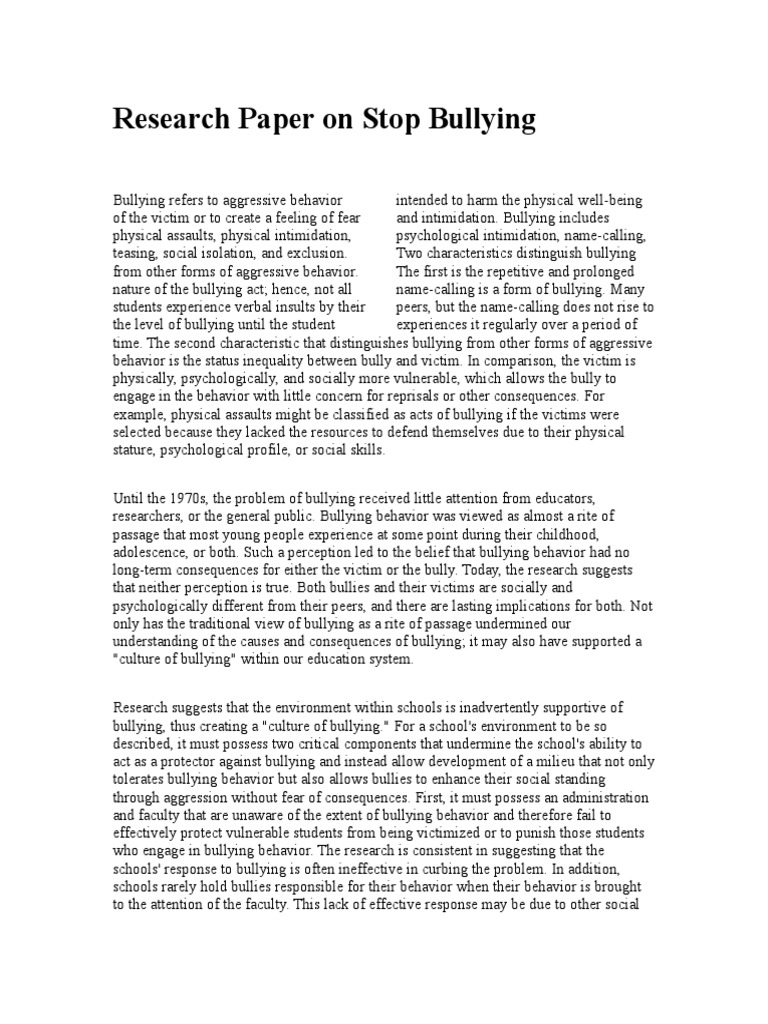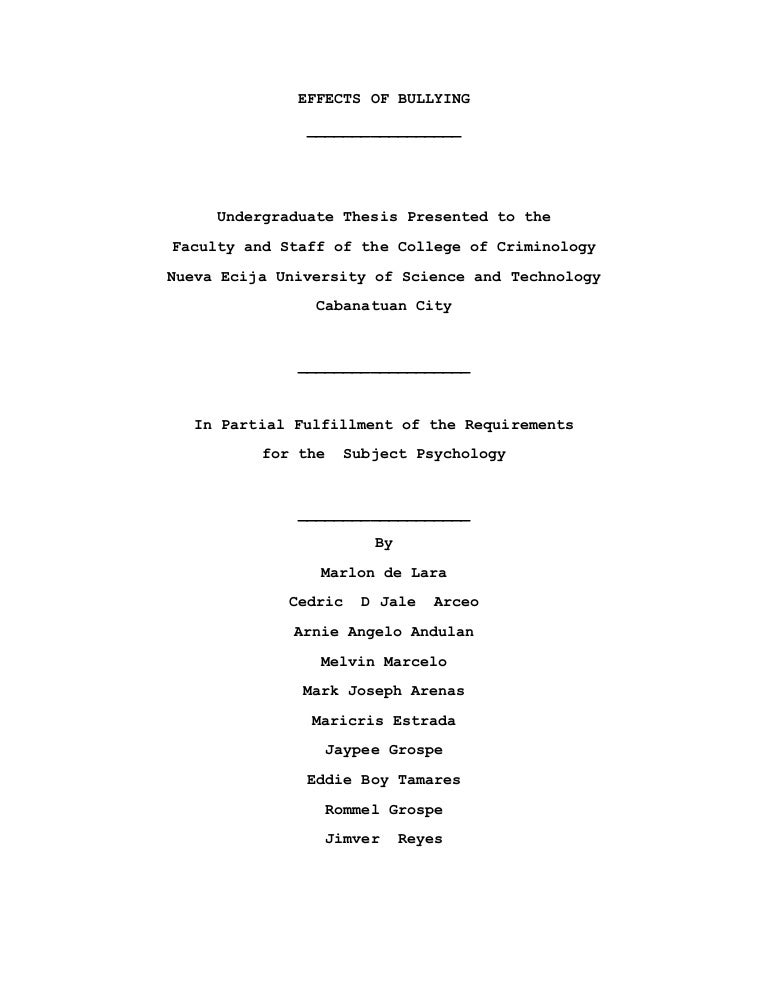Are you ready to find 'research paper about bullying filipino'? All material can be found on this website.
Table of contents
- Research paper about bullying filipino in 2021
- Published research paper in the philippines pdf
- Case study about bullying in school in the philippines
- Research paper about bullying pdf
- Sample high school research paper philippines pdf
- Qualitative research about bullying in school pdf
- Cyberbullying thesis pdf
- Cyberbullying research paper 2020
Research paper about bullying filipino in 2021
 This picture illustrates research paper about bullying filipino.
This picture illustrates research paper about bullying filipino.
Published research paper in the philippines pdf
 This picture representes Published research paper in the philippines pdf.
This picture representes Published research paper in the philippines pdf.
Case study about bullying in school in the philippines
 This picture demonstrates Case study about bullying in school in the philippines.
This picture demonstrates Case study about bullying in school in the philippines.
Research paper about bullying pdf
 This picture demonstrates Research paper about bullying pdf.
This picture demonstrates Research paper about bullying pdf.
Sample high school research paper philippines pdf
 This picture shows Sample high school research paper philippines pdf.
This picture shows Sample high school research paper philippines pdf.
Qualitative research about bullying in school pdf
 This image demonstrates Qualitative research about bullying in school pdf.
This image demonstrates Qualitative research about bullying in school pdf.
Cyberbullying thesis pdf
 This picture illustrates Cyberbullying thesis pdf.
This picture illustrates Cyberbullying thesis pdf.
Cyberbullying research paper 2020
 This picture shows Cyberbullying research paper 2020.
This picture shows Cyberbullying research paper 2020.
Is there bullying in schools in the Philippines?
College of Policy Science, Ritsumeikan University, Ibaraki-Osaka, Japan. This research looked into prevalence rate of bullying victimization and perpetration as well as teachers’ response to bullying incidence in the Philippines. A total of 340 sixth graders from five different schools in Western Visayas participated in the study.
What kind of research is there on bullying?
There is now a considerable body of cross-sectional and longitudinal research that has informed our understanding of what bullying is; who it is most likely to affect; what consequences it can have for victims, bullies, and the peer group; and what can be done to reduce its occurrence.
How many pages is a bullying research paper?
This sample bullying research paper features: 4600 words (approx. 15 pages), an outline, and a bibliography with 28 sources. Browse other research paper examples for more inspiration. If you need a thorough research paper written according to all the academic standards, you can always turn to our experienced writers for help.
What kind of bullying is most common in Asia Pacific?
In Asia-Pacific, the most common type of school bullying was verbal, e.g., “being made fun of” or “being called names” (Chen, 2015; Lai, Ye, & Chang, 2008) . A similar study in South America also found verbal bullying as the most pervasive school bullying experience of youngsters (Silva, Pereira, Mendonca, Nunes, & de Oliveira, 2013) .
Last Update: Oct 2021